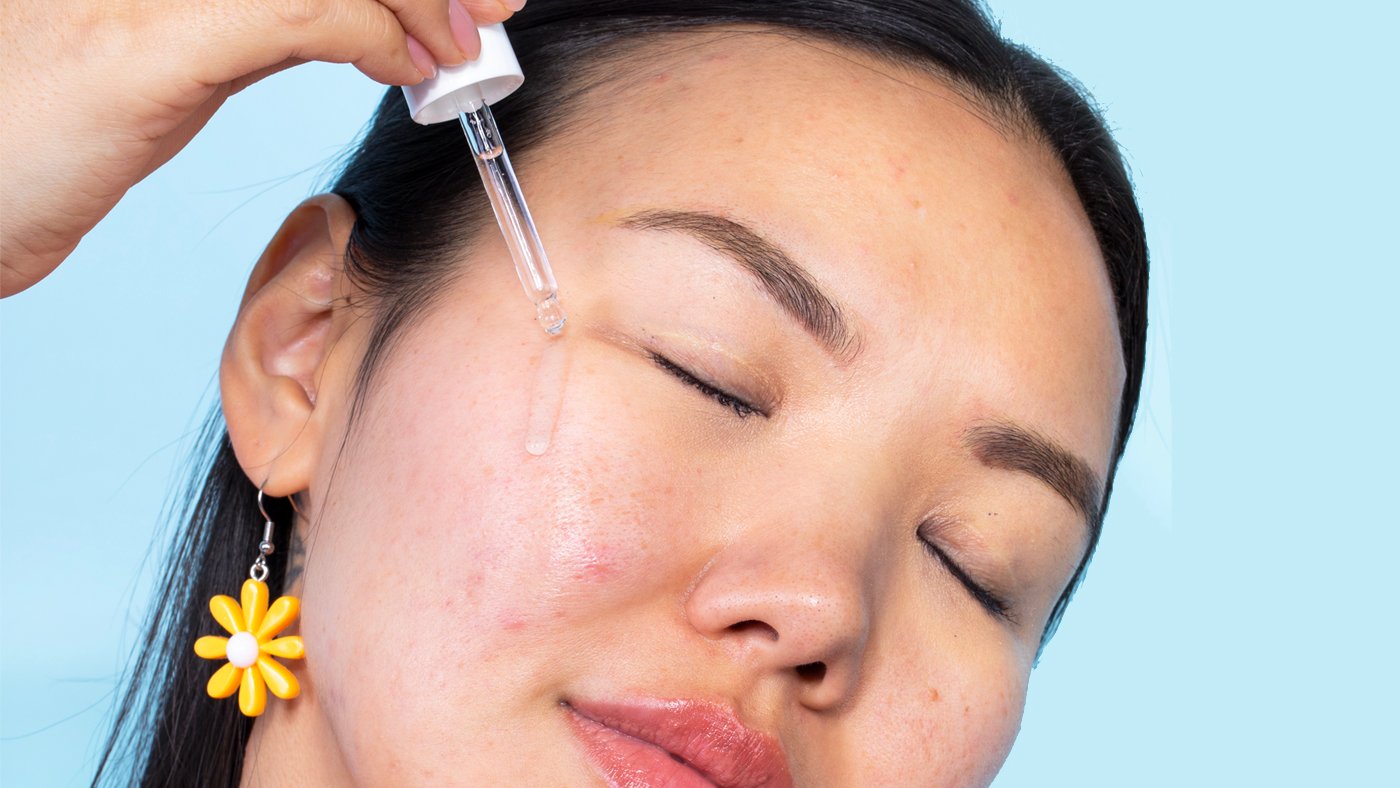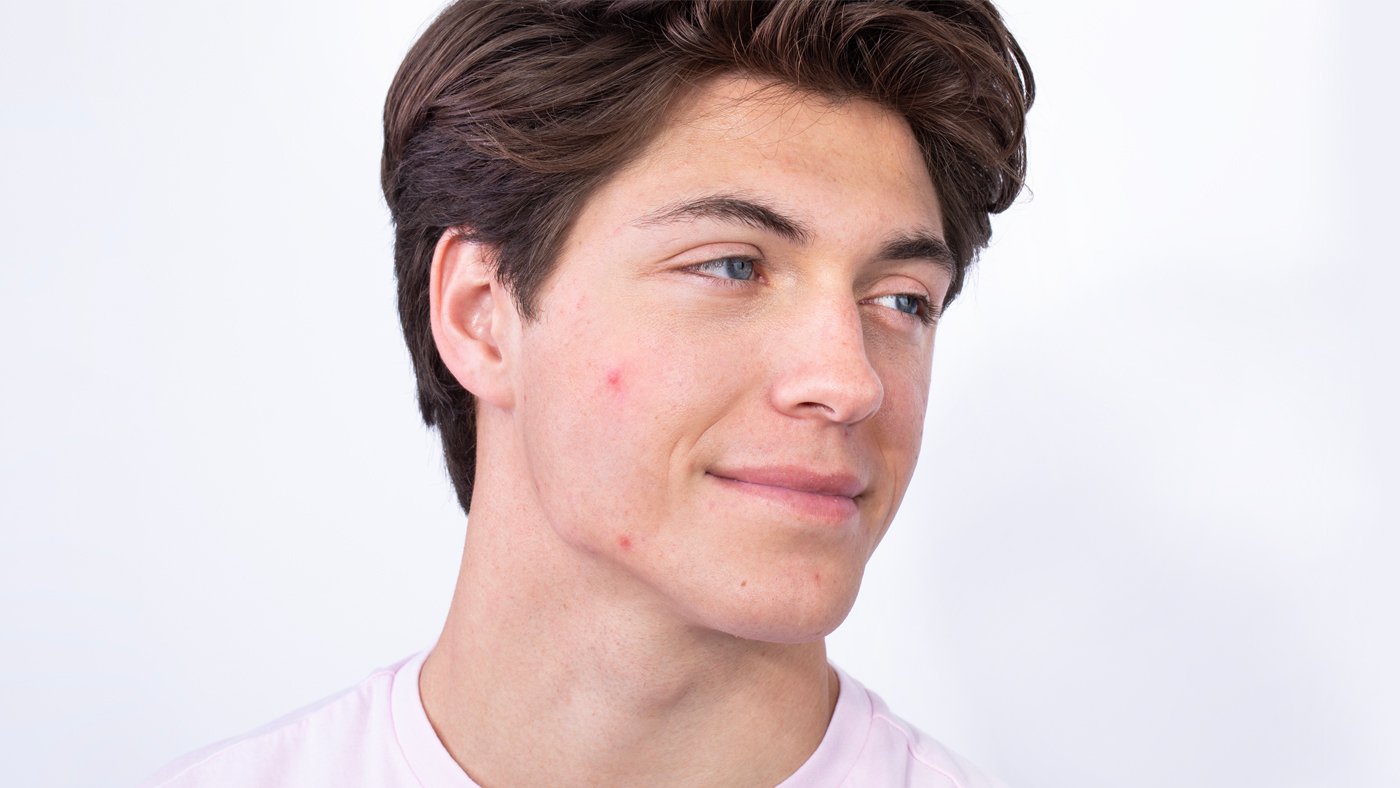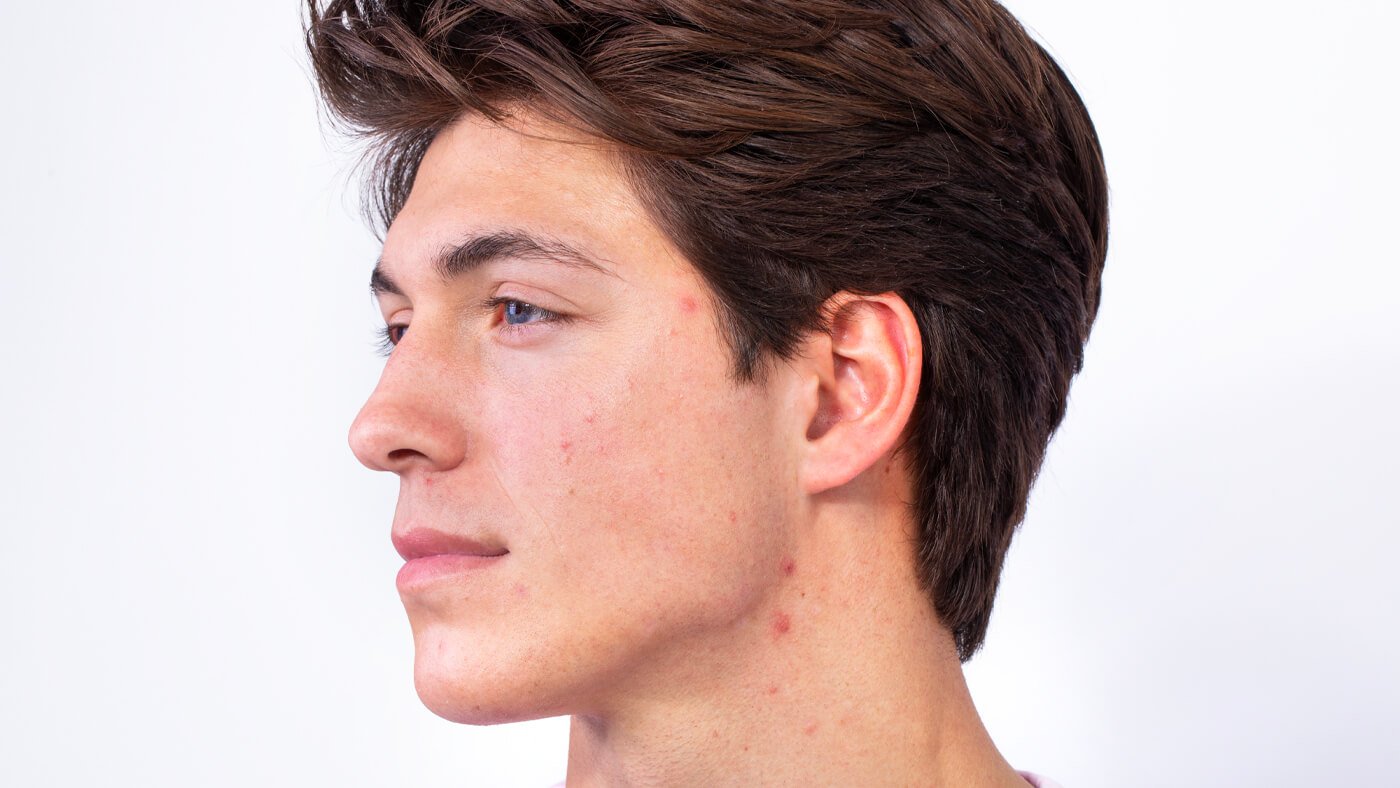The act of exfoliating the skin, whether chemical or physical, helps remove dead skin cells sitting on the surface of the skin. While the skin has its own natural cell turnover process to remove dead skin, it doesn’t always remove all of the dead skin sitting on the surface of the skin.
When dead skin cells aren’t naturally removed from the surface of the skin, the skin can look a little more dull and the dead skin can clog up pores leading to acne, blackheads, and dryness.
That’s where exfoliation comes in. Exfoliating helps better remove the dead skin from the outer layer of the skin. It helps give the skin a bit of a glowier look and can also help even the skin tone, unclog pores, and smooth texture.
There are two types of exfoliation that you can incorporate into your routine: physical or chemical.
Physical Exfoliation
Physical exfoliation involves the use of some type of brush or scrub that physically works to remove dead skin. Think of the popular silicone brushes that have short bristles. Or, you could use a facial scrub that typically includes some type of gritty ingredient in the product. This could include jojoba beads, pumice, sugar, or a number of other buffing-type ingredients.
Through physical exfoliation you are basically scrubbing the skin to help smooth texture and remove built up debris. There are also different levels of physical exfoliation with some products containing more abrasive granules or beads and other much gentler textures like rice powder.
Chemical Exfoliation
On the other hand there’s chemical exfoliation, which as it says in the name, takes a chemical approach to exfoliating. Chemical exfoliants typically include ingredients like AHAs, BHAs, or Fruit Enzymes that can work on surface level or below the surface to help remove dead skin and other pore-clogging elements from the skin.
Take Salicylic Acid as an example. Salicylic Acid is a BHA and goes deep into pores to break up dead skin cells and excess oil trapped in pores. Then there’s AHAs, like Glycolic Acid, which help exfoliate the outer layer of the skin to smooth texture and improve the look of discoloration.
So, unlike physical exfoliation, chemical exfoliation does not use gritty particles or granules to exfoliate the skin. Chemical exfoliants typically come in a liquid type product like a toner, serum, or liquid exfoliant.
Chemical + physical exfoliants
Then there are also combination products that have both forms of exfoliants. For example, some scrubs may also contain AHAs or BHAs for that added level of exfoliation on top of the granules that physically exfoliate the skin. But, too much exfoliation could be harsh on the skin, so always test stronger products on the skin first before fully incorporating it into your routine.
How to exfoliate according to skin type
The type of exfoliating product you can use really depends on your skin type and what you want to achieve.
Oily Skin
Oily skin can typically tolerate both types of exfoliants. Chemical exfoliants with ingredients like Salicylic Acid can really benefit oily skin to help clear out clogged pores and control breakouts.
Our Pore Serum is made with Salicylic Acid and Glycolic Acid (both chemical exfoliants) to help reach deep in the pores but also exfoliate the surface of the skin to best remove pore-clogging elements from the skin.
Physical exfoliants can also help oily skin types if you have skin texture concerns to help smooth the feel of rough or bumpy skin.
Regardless of which exfoliant type you prefer, stick to exfoliating only 2 to 3 times a week to avoid damaging the skin barrier or drying out the skin.
Combination Skin
Similar to oily skin, combination skin types can also use either a physical or chemical exfoliant.
Although if you do opt for a physical exfoliant but have some dry areas on your skin avoid using this type of exfoliant on flaky patches as it could irritate the skin further.
Dry Skin
For dry skin, a chemical exfoliant is the better option. The act of scrubbing the skin via a physical exfoliant can irritate an already damaged barrier.
So, stick to gentler chemical exfoliants with AHAs like Glycolic or Lactic Acids. AHAs can be less irritating to compromised skin as they don’t penetrate too deep into the skin.
You’ll also want to limit exfoliation if you have a dry skin type to 1 to 2 times a week.
Sensitive Skin
Sensitive skin types often are pretty limited in the type of skin care products they can use. This includes exfoliants, given that some can be too harsh on the skin. It really depends on the level of sensitivity on whether you can or cannot use exfoliants.
If you have sensitive skin and still want the benefits of exfoliation then you can use a gentle chemical exfoliant. But you should definitely patch test an exfoliant first. You can do this by applying the product to your inner wrist or behind the ear (as recommended by the AAD) and see how your skin reacts over the course of at least a week.
Then if all is clear you can start incorporating the exfoliant in your routine slowly; start once a week and don’t exceed twice weekly.
Lastly….
Regardless of skin type, after care is super important following exfoliation. Always moisturize the skin to help prevent any unwanted negative effects like dryness.
And if you find that your skin needs some extra TLC, then try following a skin cycling routine that includes a reparative routine in the days following exfoliation.





